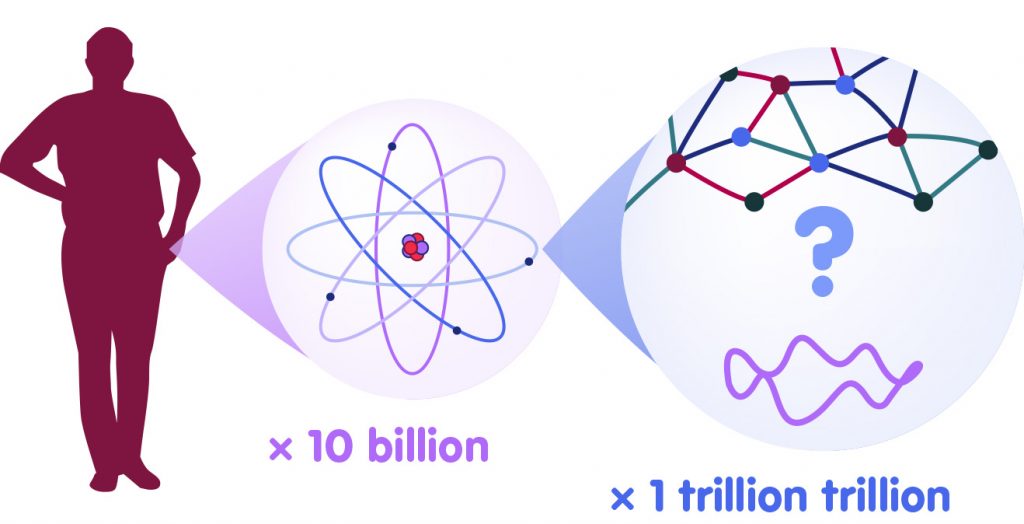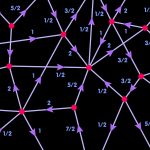Relativity and the Quantum / Elementary Tour part 3: The need for quantum gravity
So far in the pages of Elementary Einstein, we have encountered two examples in which the limits of general relativity were reached. Both cases involved space-time-singularities. The first example lurked in the interior of a black hole. As briefly described in the section on black holes, inside every black hole is a spacetime boundary where the journey of an infalling object comes to an abrupt end – a singularity, where spacetime curvature becomes infinitely strong. Also, we encountered a kind of mirror image to the black hole singularity in connection with the big bang models, in the section A mysterious beginning: According to the classical cosmological models, the universe began with the big bang, which is another spacetime boundary – a singularity where all matter of the universe is compressed to infinitely high density.
Ill-behaved spacetime boundaries with bizarre infinitely high densities are a sure indication that we have reached the limits of Einstein’s general theory of relativity. In a way, that does not come as a surprise: With energy concentrations so high and matter compressed to microscopically small scales, one should expect the laws of the micro-world to come into play – the laws of quantum theory. But in Einstein´s theory, these laws are not included. That is why, when describing the earliest stages of our universe or the interior of a black hole, Einstein´s general relativity is not enough. The proper model would incorporate both Einstein´s geometrical gravity and the laws of the quantum world. In other words, a proper model would have to rely on a theory of quantum gravity.
An analysis of the fundamental constants of gravity and quantum theory reveals a natural length scale at which quantum gravity effects can be expected to become important: the Planck length – roughly 10–35 meters. The following illustration might give you an inkling of how small this is:

From everyday lengths of about one meter, you would have to zoom in by a factor of 10 billion to come to the typical scale of atoms. Only if you zoom again by a factor of 1 trillion trillion will you reach the Planck length. Two of the strange objects that might await us there – spin networks and strings – are sketched in the illustration.
So far, so good. Unfortunately, formulating a theory of quantum gravity has turned out to be one of the hardest problems of modern physics. Attempts to incorporate gravity into the quantum framework as if it were just another force like electromagnetism or the nuclear forces have failed utterly; such models contain unphysical results (physical quantities predicted as having infinite values) and have no predictive power whatsoever. Until now, the question of how a proper quantum theory of gravity should look has not found a complete answer. There are, however, promising candidates for a theory of quantum theory. The most important candidate theories will be introduced briefly on the following two pages.









